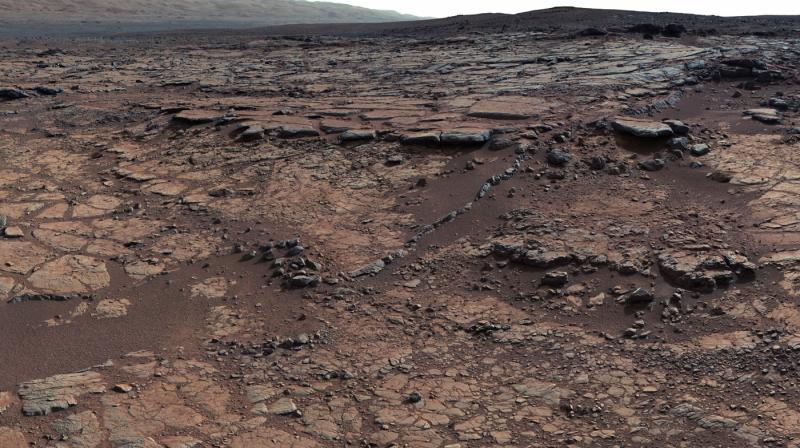Curiosity Rover finds evidence of presence of carbon dioxide on Mars
The amount is however, very less, probably why the water bodies dried up

NASA’s curiosity Rover has now sharpened the Ancient Mars Paradox. New findings have suggested that a lake was present and the bedrocks indicate there was a little amount of carbon dioxide in the air to help keep a lake unfrozen.
A new study also enumerates the absence of carbonate in the rock samples which have been analyzed by Curiosity. Ample evidence before has stated the possibility of water flowing and pooling on the planet’s surface. Yet, the ancient sun was about one-third less warm and climate model makers struggle to produce scenarios that get the surface of Mars warm enough for keeping water unfrozen.
One of leading theories is to have a thicker carbon dioxide atmosphere forming a greenhouse-gas blanket, helping to warm the surface of ancient Mars. However, according to a new analysis of data from Nasa’s Mars rover Curiosity, Mars had far too little carbon dioxide about 3.5 billion years ago to provide enough greenhouse-effect warming to thaw water ice.
The same Martian bedrock in which Curiosity discovered sediments from an ancient lake where microbes could have thrived is the source of the evidence adding to the quandary about the method of how such a lake could have existed. Curiosity however, detected no carbonate minerals in the samples of the bedrock it analyzed. The latest analysis concludes that the shortage of carbonates in that bedrock means Mars’ atmosphere when the lake existed—about 3.5 billion years—could not have held much carbon dioxide.
"We've been particularly struck with the absence of carbonate minerals in sedimentary rock the rover has examined," said Thomas Bristow of NASA's Ames Research Center, Moffett Field, California. "It would be really hard to get liquid water even if there were a hundred times more carbon dioxide in the atmosphere than what the mineral evidence in the rock tells us."
Curiosity has made no definitive detection of carbonates in any lakebed rocks sampled since it landed in Gale Crater in 2011. The dilemma has been building for years, and evidence about factors affecting surface temperatures, and the blanketing from the planet’s atmosphere, adds up to a mismatch with widespread evidence for river networks and lakes on ancient Mars.
When there are two lines of scientific evidence present and they are irreconcilable, the scenario may be set for understanding on why they are not. The Curiosity’s mission is continuing to investigate ancient environmental conditions on Mars.

